
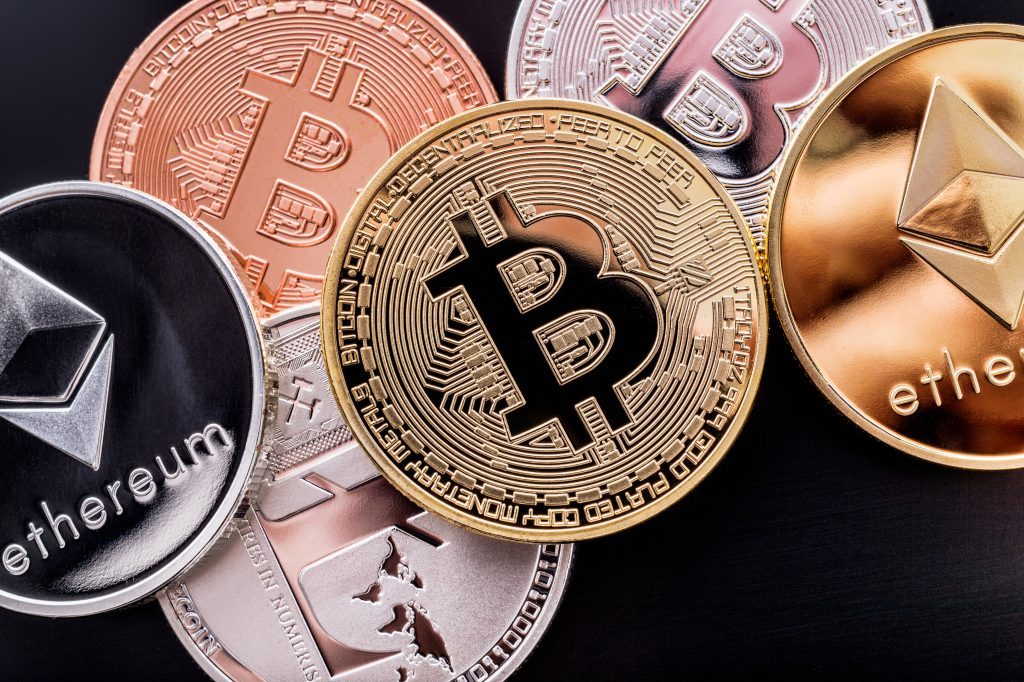
Cryptocurrency: what was once a fringe interest of hackers and Silicon Valley types has burst into the mainstream over the course of the past year, due in large part to Bitcoin’s and other cryptocurrencies’ stratospheric explosion in value, before finally falling back down to a slightly more stable price level this past spring. Cryptocurrency, colloquially referred to as “crypto” for short, and its related buzzwords like “blockchain” and “mining” began popping up everywhere thanks to the media fervor over this new gold rush. Speculators looking to make a quick buck hopped on the crypto bandwagon, excitedly posting pictures of the Lamborghinis they’d buy with their Bitcoin windfall. Crypto fever became so pervasive that even celebrities like Akon and Paris Hilton tried to get in on the action, to varying degrees of success.

If this is what comes to mind when you think “cryptocurrency,” it’s time to recalibrate your expectations. Maybe try and run a hedge fund instead.
If you’re a gaming enthusiast like me, crypto may have shown up on your radar during recent graphics card shortages caused by miners trying to throw together the most powerful rigs possible in an attempt to snatch a piece of the crypto pie. Fortunately, the recent cooling-off of the crypto gold rush and the accompanying drop across the board in GPU shortages seem to indicate that the worst is over.
Something that gets lost amongst the din of crypto-mania is what cryptocurrencies actually are; what they do, why they were created, and how they may disrupt entire sectors of technology. And how does someone even start using cryptocurrency? This guide is meant to serve as an introduction for those of you who have heard about cryptocurrency and have a base level knowledge of the subject, but have never really explored what they’re about on a deeper level. Hopefully by the end, you will see past the hype and reckless financial speculation, and discover how cryptocurrency, is a technological innovation that may not only change the way we conduct transactions, but also the internet as a whole.
Cryptocurrency
A cryptocurrency is a digital asset that utilizes cryptography to secure and verify transactions, and to create more units of that currency. They are generally designed to be a more private and reliable way to conduct transactions, without the control of central bodies like governments or banks. Instead, cryptocurrency is a distributed network: it is made up of users who opt in to use their computers to process and store pieces of information on transactions. In this sense, cryptocurrency systems are more collaborative than traditional monetary systems.
Each unit of cryptocurrency typically carries its own unique code to secure it against counterfeiting. Most crypto networks are inherently secured in their design: utilizing a distributed network means there isn’t one single point for hackers to breach and obtain information or steal from.
Cryptocurrencies, with all the possible applications of their underlying technology combined with their ever-rising value, have become part of the tech culture zeitgeist, Legions of startups have crashed on to the scene in the hope that they will have the next billion-dollar ICO (short for initial coin offering, the term for the public debut of a new cryptocurrency). At the time of this writing, there are 1,937 different cryptocurrencies available; this crypto universe can be traced back to its big bang: the creation of Bitcoin.
Bitcoin

Bitcoin was created by a person (or group of people) going by the alias of Satoshi Nakamoto. Nakamoto outlined the basics of what is generally considered to be the first cryptocurrency: Bitcoin (individual units of which are commonly abbreviated as BTC). To run this new form of digital currency, Nakamoto outlined a network, dubbed blockchain, that would realize the vision of decentralized monetary control and a safer, more trustworthy transaction method. Bitcoin differs from traditional currencies in the way transactions occur; users send payments without passing through banks or payment gateways, with the blockchain serving as the central ledger for checking payments. The blockchain is decentralized; it is not controlled by an individual, but instead by a distributed network of computers around the world.
To protect against inflation, Bitcoin is also designed to be limited in supply to 21 million bitcoin; once the final Bitcoin is created, there will be no more. To create new units of the currency, and to incentivize people to offer their computers up for blockchain processing power, Nakamoto devised a process known as mining. In mining, computers on the blockchain network work on complex cryptographic math problems, grouping transactions into a block of data and adding it to the blockchain network; whoever solves the problem first is rewarded with Bitcoin. A bitcoin can be broken down into a smaller unit, called satoshis, named after the creator of Bitcoin. One bitcoin is equal to 100,000,000 satoshis, so there is plenty of room for the currency to be broken down long after the final Bitcoin is mined.
Bitcoin remains the premier cryptocurrency, with a market value of over $139 billion at the time of this writing (back when Bitcoin was relatively new in 2015 the value was $222.93, and at the time of writing this it is $7,540). For comparison, the second most valuable crypto, Ethereum, is currently valued at $46 billion, certainly nothing to sneeze at, but dwarfed in comparison to the Bitcoin behemoth. Bitcoin is also the most widely-accepted crypto payment method; in fact, you can use it for purchases on Newegg!
Blockchain: The Disruptive Heart of Cryptocurrency
Bitcoin pioneered a new way to conduct transactions, but the technology behind it has proved even more disruptive. The blockchain may open many new possibilities for the way we communicate and control information, and big names are taking notice. Everyone from IBM to Microsoft have dedicated groups to work on to harness the boundless potential of the blockchain. It’s clear blockchain is a pretty big deal, but what exactly is it?
Blockchain

The blockchain is the ledger which stores all transactions across separate blocks, which essentially like the individual pages of a the ledger. The blockchain is run through group participation: it is a network of individual computers, or nodes, connecting to verify transactions and maintain the ledger. Because the blockchain is decentralized, the information is not stored in one location for a hacker to corrupt and tamper with. The blockchain lives in a state of consensus—agreement on the information in the ledger—and checks in with itself periodically (in the case of Bitcoin, every ten minutes).
Although blockchain was created as a network for maintaining Bitcoin, blockchain can do far more than simply power the Bitcoin platform. Many people make the analogy of email: just as email is merely one application of the larger internet, Bitcoin is just one use and part of blockchain overall. Some startups have come up with innovative ways to use blockchain, many of them creating their own cryptocurrencies in the process. Two of the most popular alternatives to Bitcoin are Ethereum and Ripple, both of which aspire to be far more than simple Bitcoin alternatives. Even global titans IBM and Walmart have partnered to use the blockchain for tracking sources of food poisoning outbreaks.
Mining
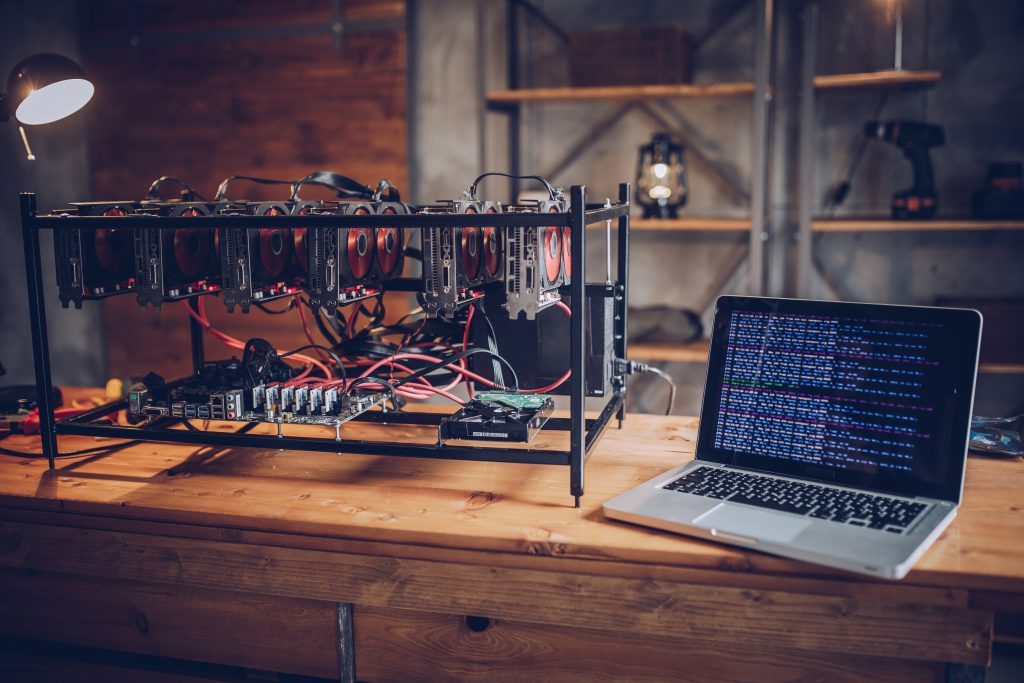 As touched on earlier, Bitcoin and many other cryptocurrencies are created through a process called mining. Miners opt in to using their computer as a node, the term used to denote a device connected to the blockchain. Mining means machines working on mathematical problems, with the solvers awarded a block of bitcoin, which at the time of this writing is 12.5 bitcoin.
As touched on earlier, Bitcoin and many other cryptocurrencies are created through a process called mining. Miners opt in to using their computer as a node, the term used to denote a device connected to the blockchain. Mining means machines working on mathematical problems, with the solvers awarded a block of bitcoin, which at the time of this writing is 12.5 bitcoin.
Miners power the blockchain network, grouping outstanding transactions into blocks and adding them to the blockchain, while solving complex mathematical problems. The machines brute force a solution, guessing the answer at random. This requires a tremendous amount of computing power, so miners generally put together “mining rigs,” computers stocked with multiple powerful GPUs in an effort to speed up the solving process.The first miner or group of miners to reach the solution gets bitcoin. In this sense, mining is like a contest: in exchange for participating in the blockchain network, you are given the chance to win bitcoin via your computer attempting to solve the problem. Many individuals looking into getting into mining join mining pools to increase their odds of at least taking home some bitcoin for themselves on a somewhat regular basis, and in fact it is quite rare for mature cryptocurrencies like Bitcoin to be mined by an individual working alone. Otherwise, the odds are stacked against you hitting the big payoff (like going out to mine for your own diamonds with a pickaxe), and you may never see any reward for your mining efforts.
More Than Just Bitcoin: Other Pioneers in Crypto
Bitcoin may be the first and most valuable, but there are other cryptocurrencies pioneering new uses for crypto and the blockchain. These are some of the most popular and valuable.
Ethereum
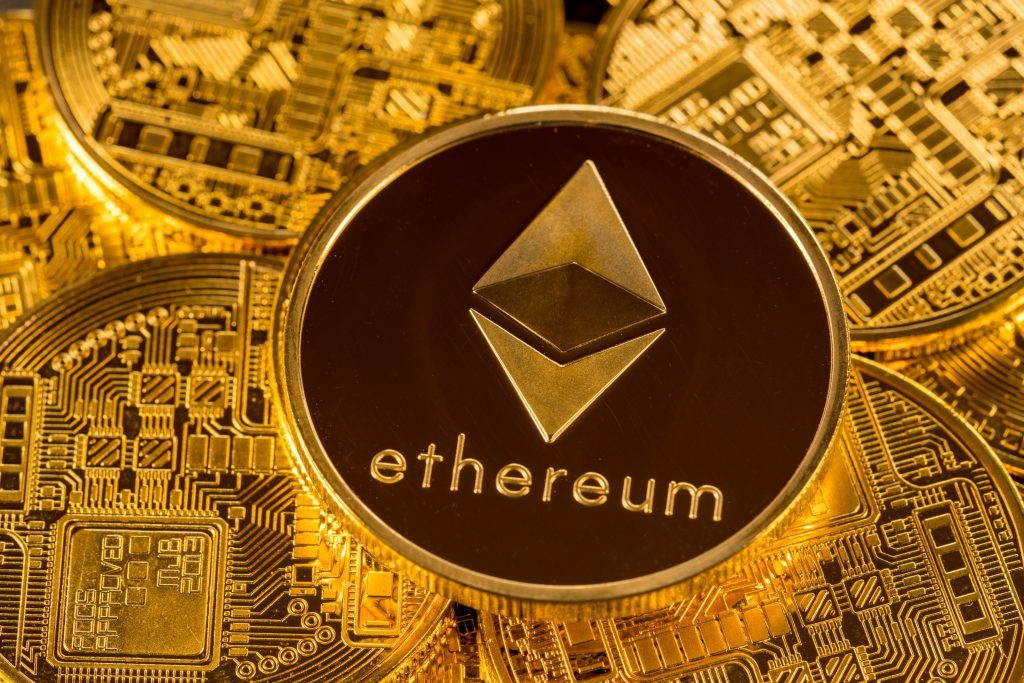
A self-described “Blockchain App Platform,” Ethereum aims to decentralize the internet at large, replacing servers and clouds with the blockchain. Developers can create decentralized apps, or “dApps” for the Ethereum platform. It’s something like an iOS App Store or Google Play equivalent for the blockchain, except with Ethereum the platform is open and not under the control of any single authority. Ether is the cryptocurrency awarded to those who participate in the Ethereum blockchain.
Bitcoin Cash
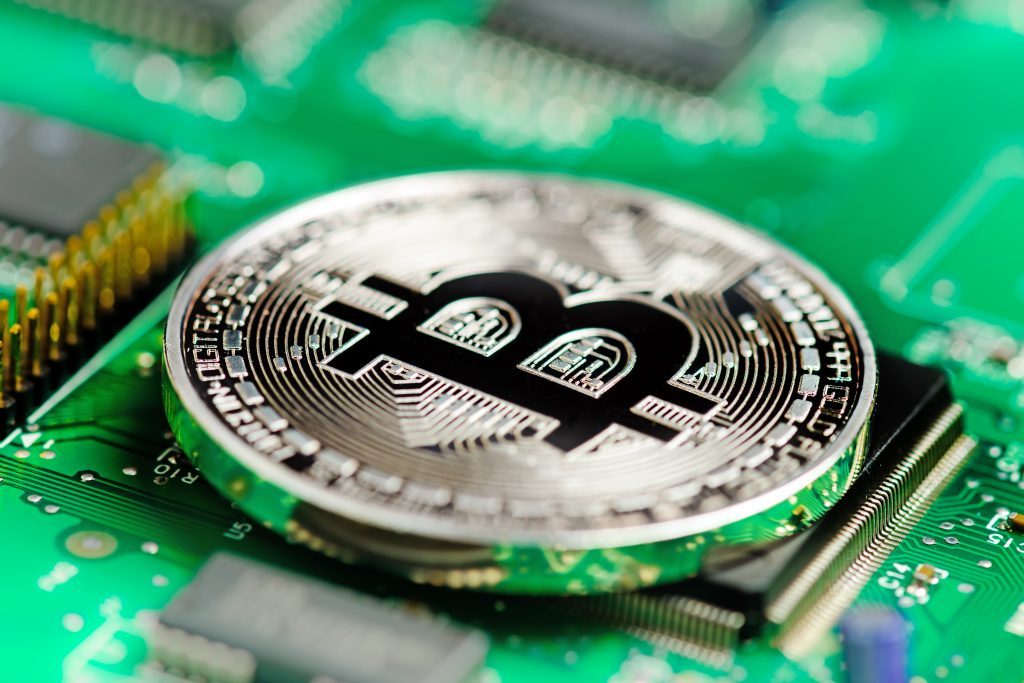
Launched in August 2017, Bitcoin Cash expanded the block size from the 1MB offered by Bitcoin to 8MB in an effort to increase the number of transactions the network can process and reduce delays in transaction processing times. The long transaction times of Bitcoin led to massive fees to accelerate transactions, to the point that using Bitcoin as a method of payment was becoming impractical in many cases
Bitcoin Cash was devised as a solution to the inflated processing times and fees. Bitcoin Cash’s creation can be considered what is known in the crypto community as a hard fork. A hard fork is a permanent divergence in the blockchain in this case a new cryptocurrency based on bitcoin’s technology, in which when non-upgraded nodes — devices that have not updated to the hard fork — can’t validate blocks created by nodes that have upgraded to the new software. To use a metaphor, a hard fork is like a new video game console; I’ll use the PS4 as an example. Just as the PS4 is unable to run PS3 games and vice-versa, existing non-upgraded nodes can’t validate the blocks created by the nodes that have updated to the new version created by the hard fork. Bitcoin Cash is a wholly separate currency from Bitcoin; it simply uses Bitcoin technology as its technical foundation.
So far, Bitcoin Cash seems to be on its way to actualizing its potential. Transactions are typically much cheaper than regular Bitcoin transactions, and although it has not yet passed the average transaction times of standard Bitcoin, it is rapidly closing the gap.
Ripple
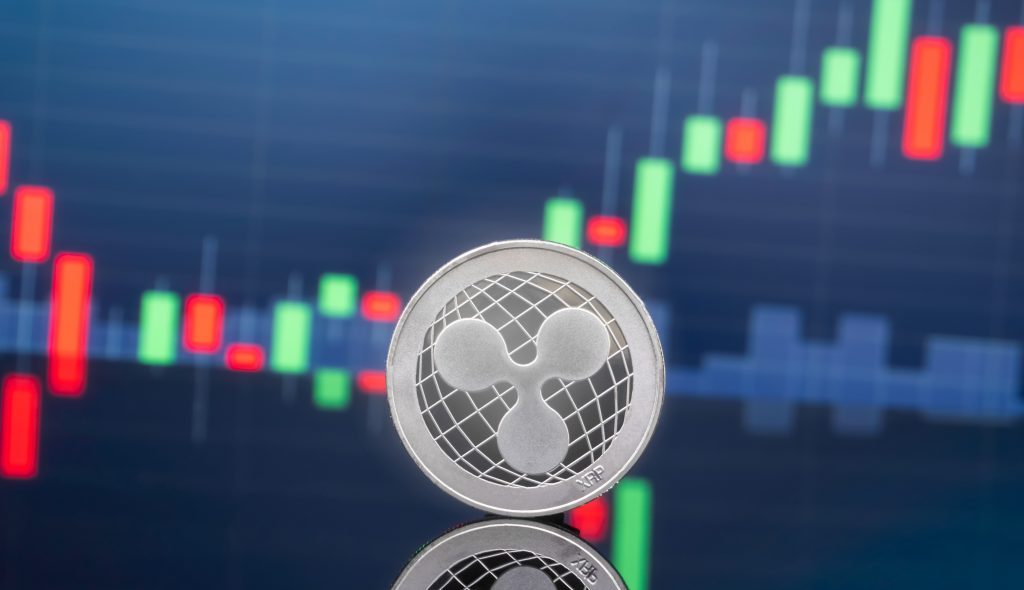
Ripple is an unconventional cryptocurrency. Ripple’s network, dubbed RippleNet, is a platform designed to facilitate faster global payments. Ripple is different from other cryptocurrencies in that instead of being mined, the company—also named Ripple—has already created all 100 billion units of the currency (abbreviated as XRP), giving 20 billion to the creators and the rest to the company, which issues units to the public when it sees fit.
XRP is meant to be used a “bridge currency” for settling global payments faster. Even though users can send other types of currency over RippleNet, including Bitcoin and regular fiat currencies like the US Dollar, XRP is designed to give banks on-demand liquidity. Typically, payments into emerging markets require pre-funded local accounts, resulting in high liquidity costs. By using XRP as a bridge, banks can forgo setting up accounts for the local currency, resulting in major cost savings.
Ripple has partnered with big names like Bank of America and American Express, so they have an extra degree of legitimacy over the also-ran crypto firms over-saturating the market. Thanks to its relationships with major financial institutions, Ripple seems poised to remain as one of the top cryptocurrencies.
How To Obtain Cryptocurrency
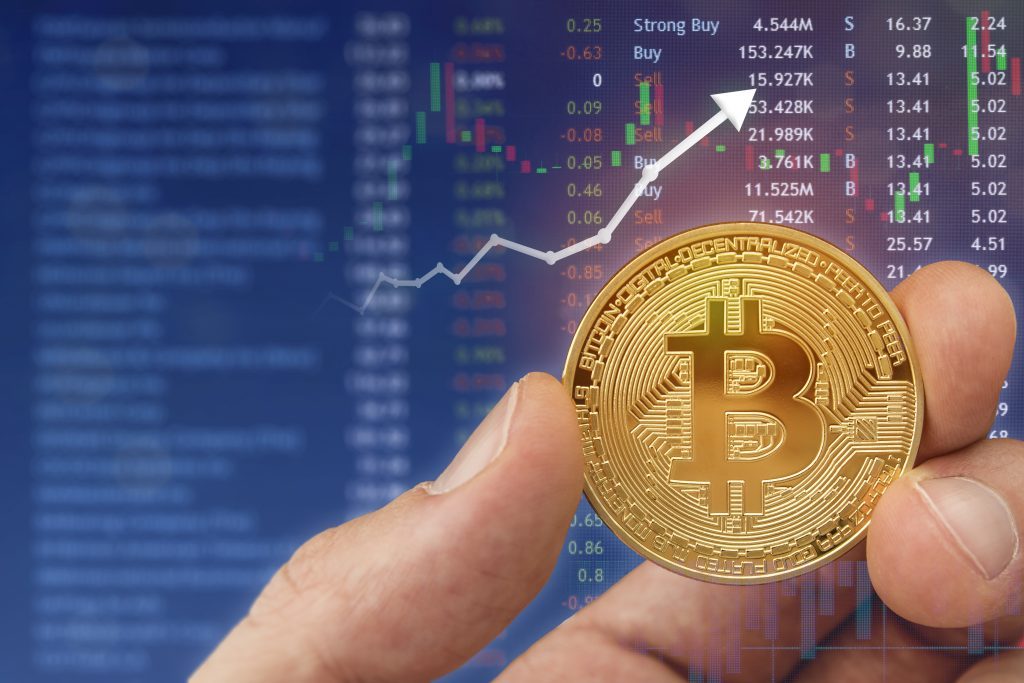
Just as you don’t need to go out in the mountains and mine for gold if you want physical money, you don’t need to mine to get ahold of some units of cryptocurrency. You can buy cryptocurrency from a number of exchanges, either by trading other digital currency, or funding your purchase with a regular bank account or credit card. Three of the most popular exchanges are Coinbase, Gemini, and Kraken. Some cryptocurrencies like Ripple may not be available on some exchanges, so be sure to check the selection before creating an account.
Just like with physical money, you’ll need a wallet to store your currency. A wallet can either be a piece of physical hardware or an online application. Although many exchanges include a built-in online wallet, hardware wallets are a more secure way to store crypto because they spend most of their time offline, and are therefore not hackable. They typically only connect to the internet to enact transactions. New hardware wallets are being released frequently; one of the latest is the Archos Safe-T Mini, which you can find on Newegg.
Crypto Decrypted
With all the jargon and seemingly complex technology, cryptocurrency can seem daunting to get into, especially if you don’t have a particularly strong technical background, but in reality it has become far more accessible in recent years. You don’t need to hold an MIT doctorate to start investing in the world of cryptocurrency and exploring the possibilities of the blockchain, you just need a wallet and a good exchange.
Thanks to the blockchain, cryptocurrency is likely here to stay. With the possibilities of distributed blockchain networks, we may see a revolution in the way we interact with the internet, with the power transferring from large corporations and governments to a democratized peer-to-peer network. If you want a piece of that future today, then using cryptocurrency is the best place to start.
